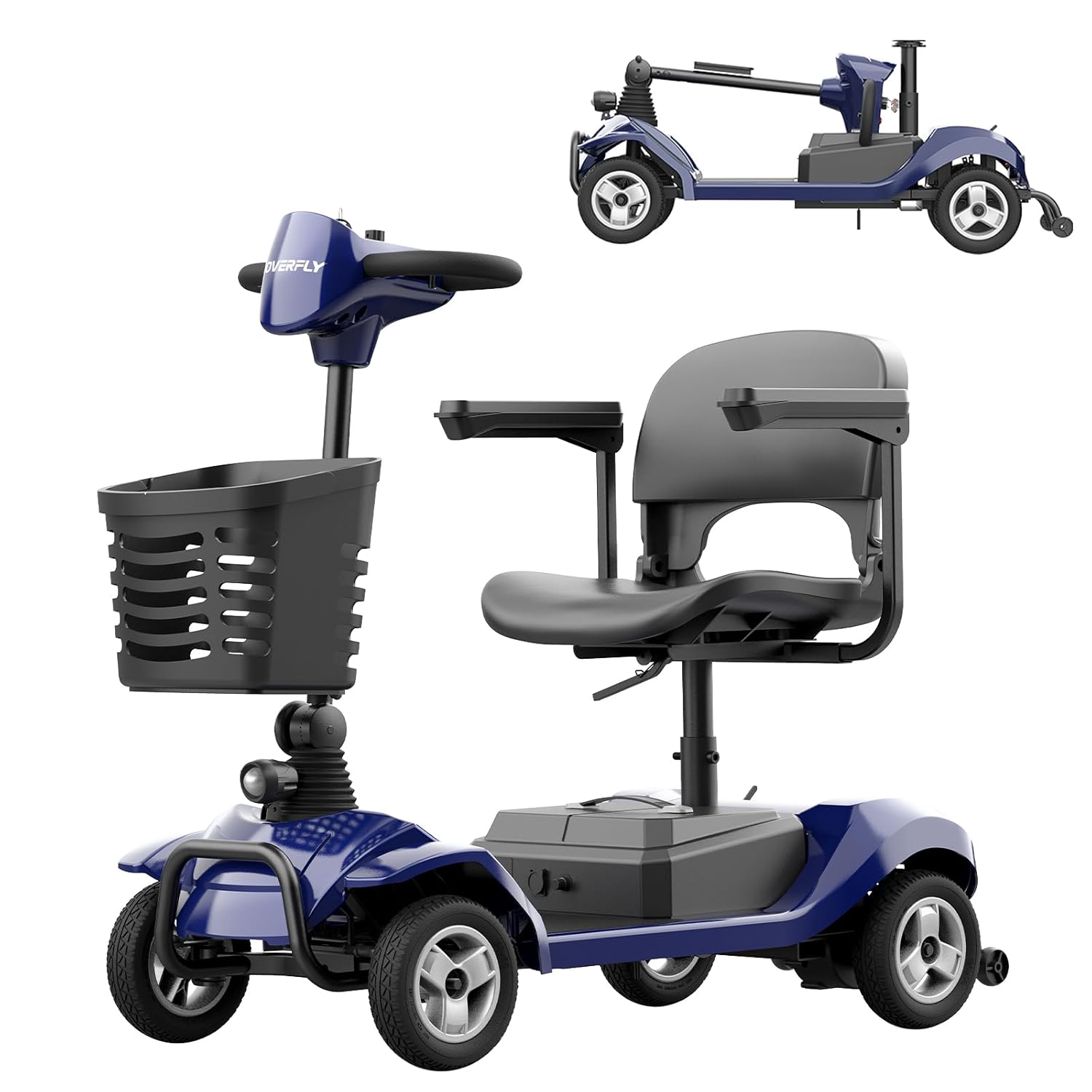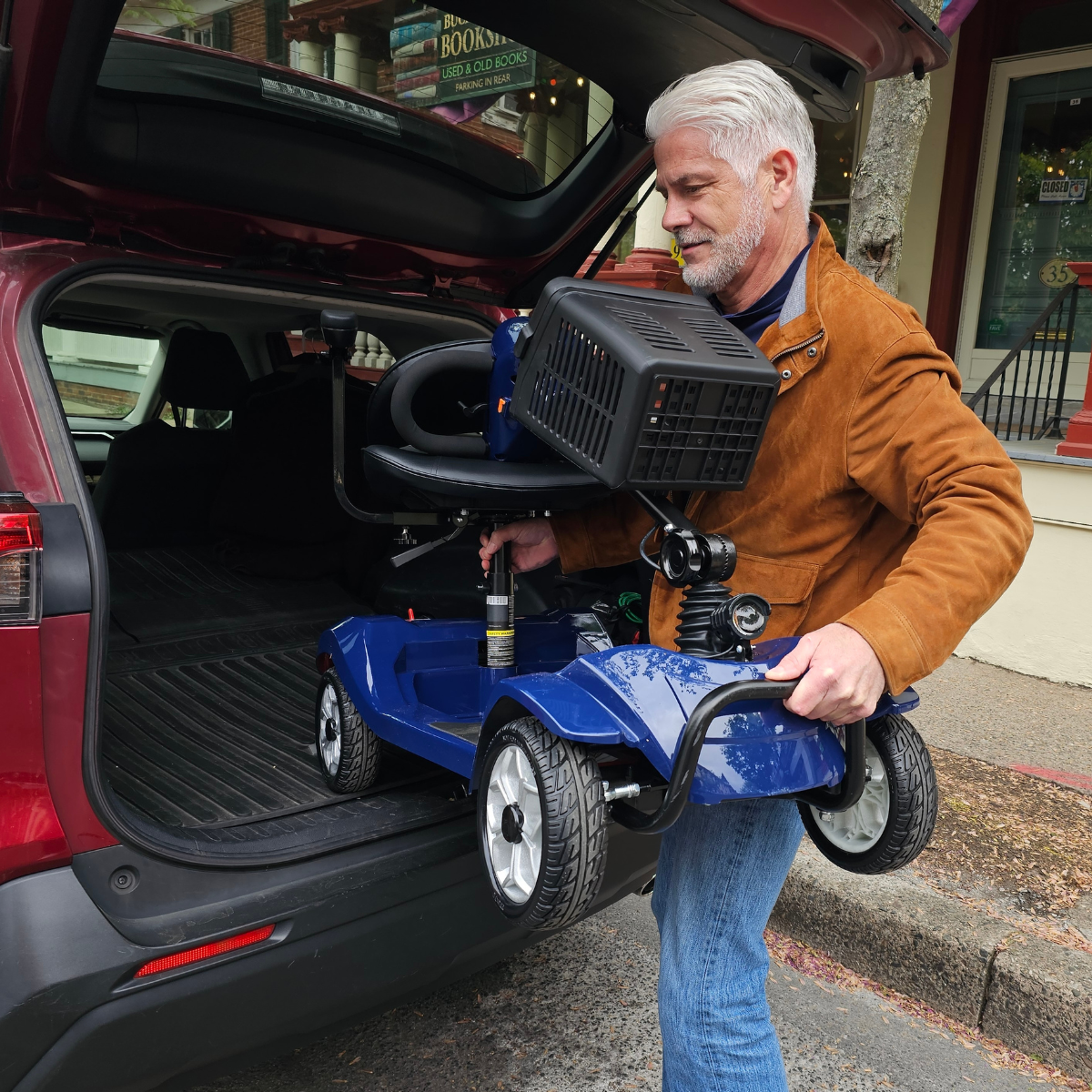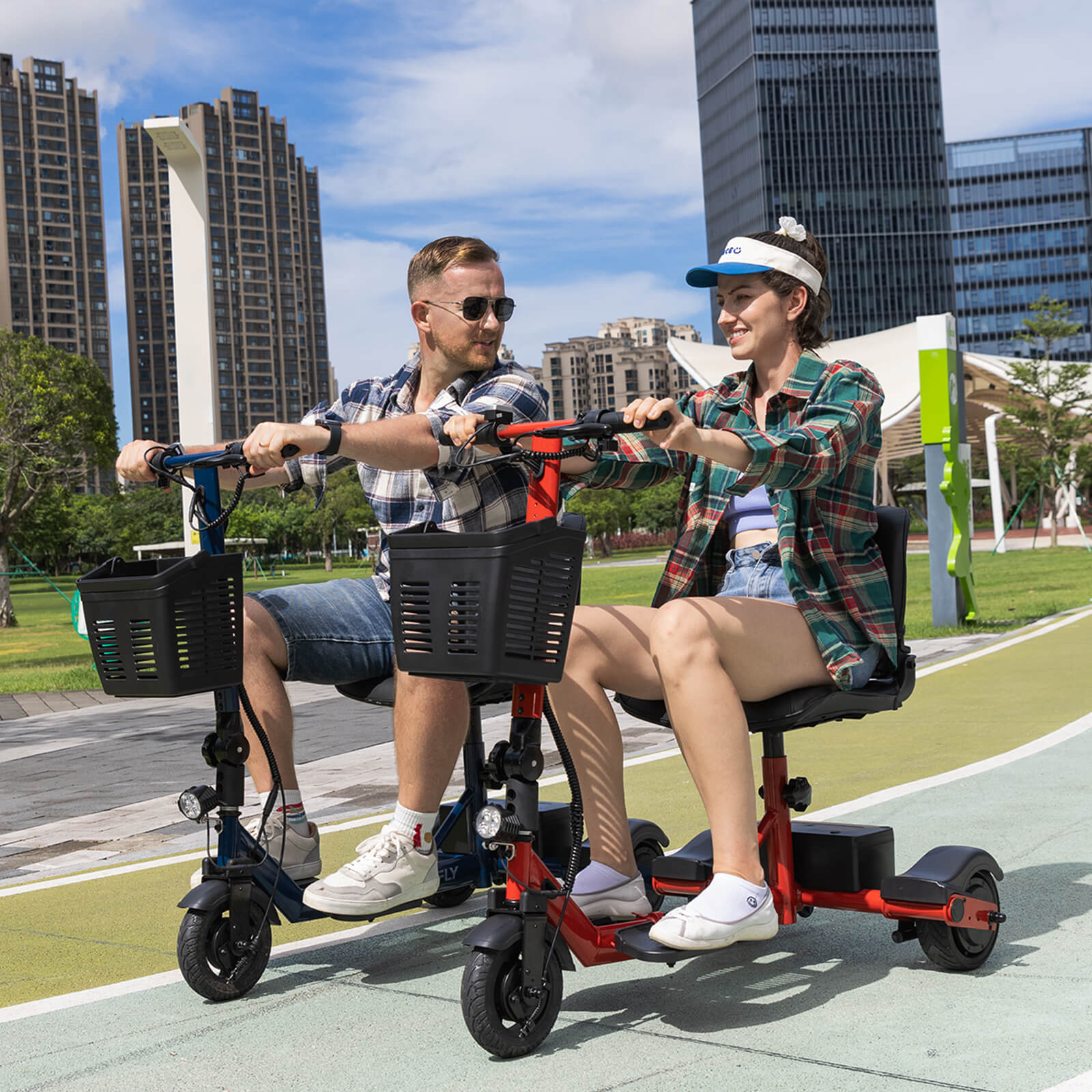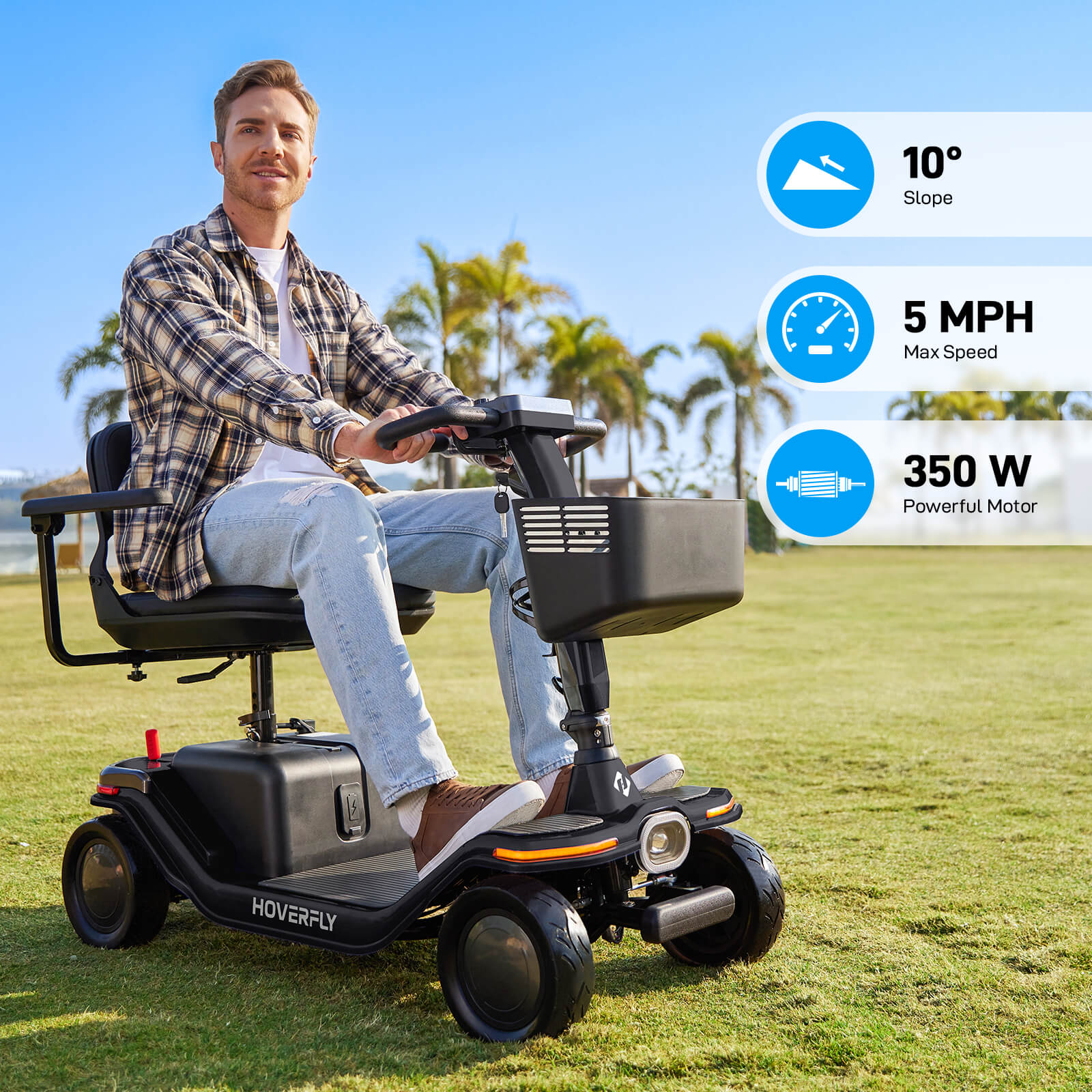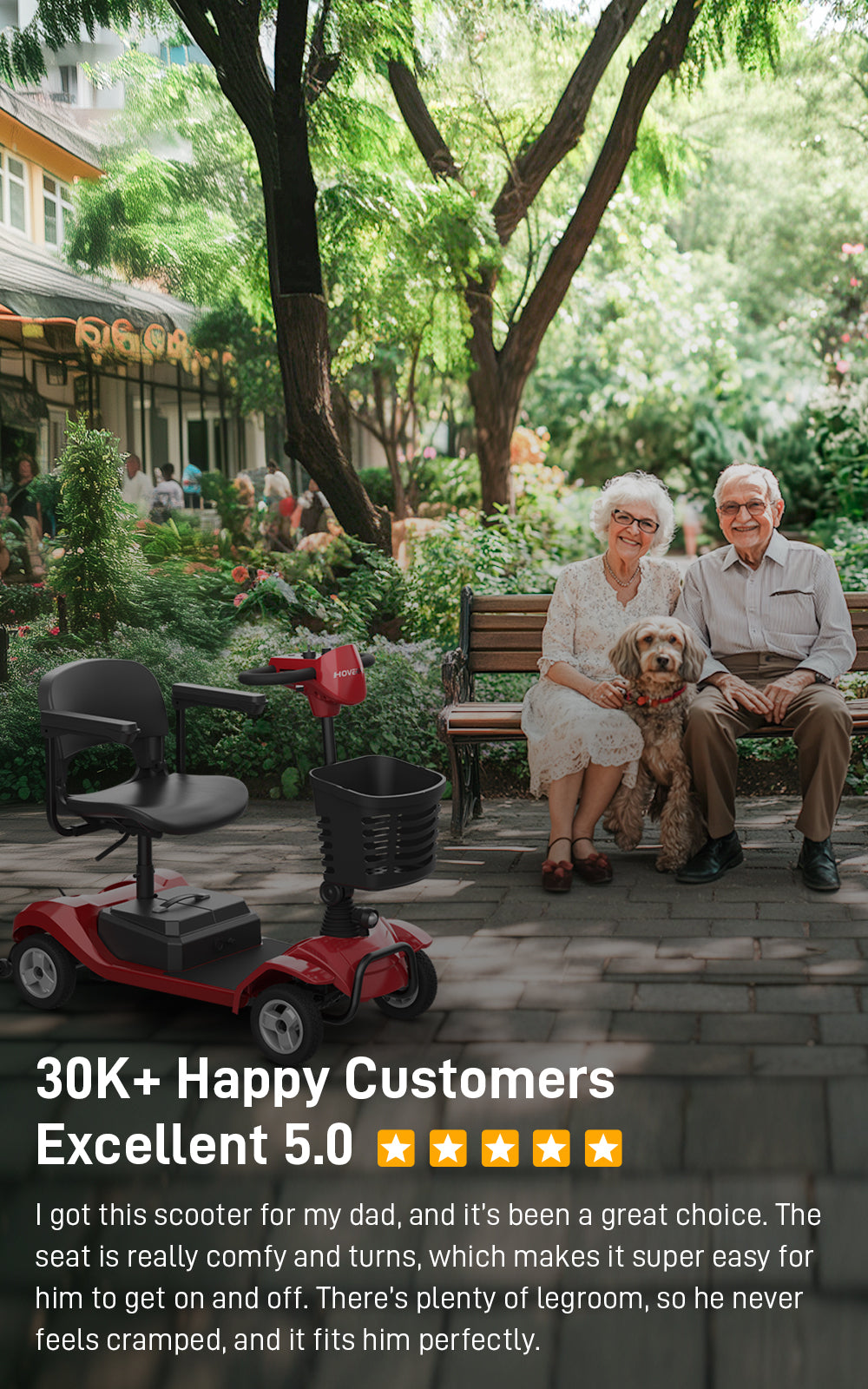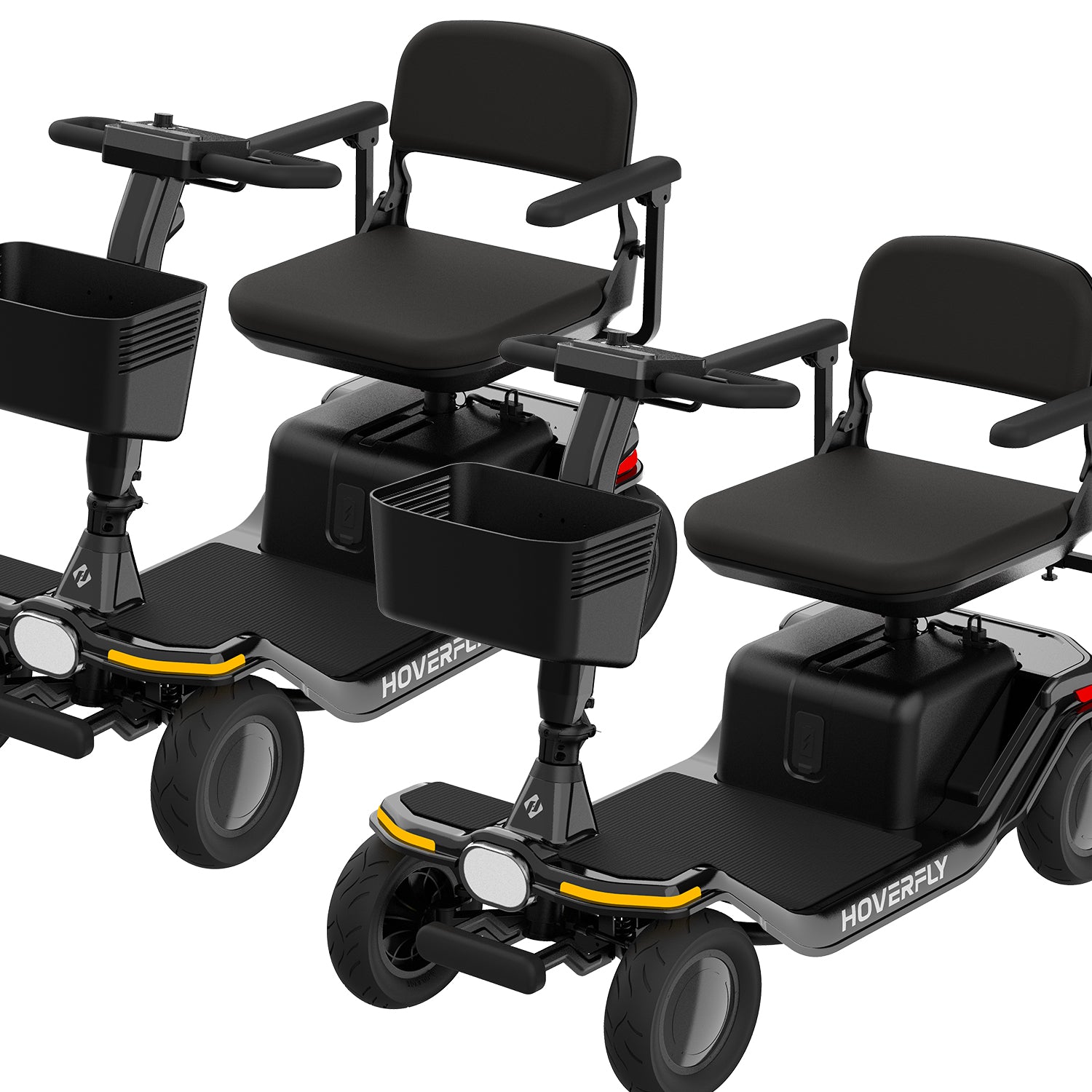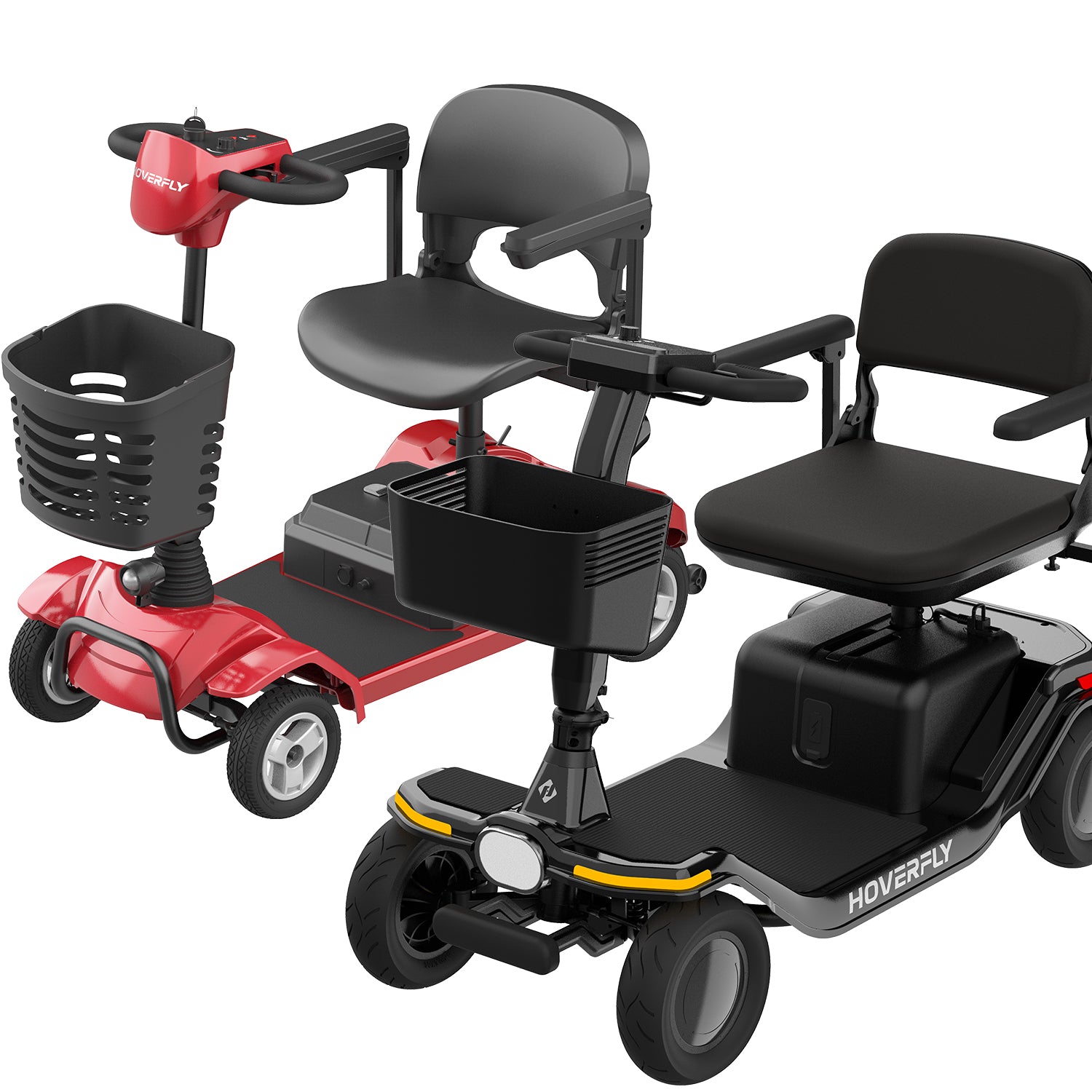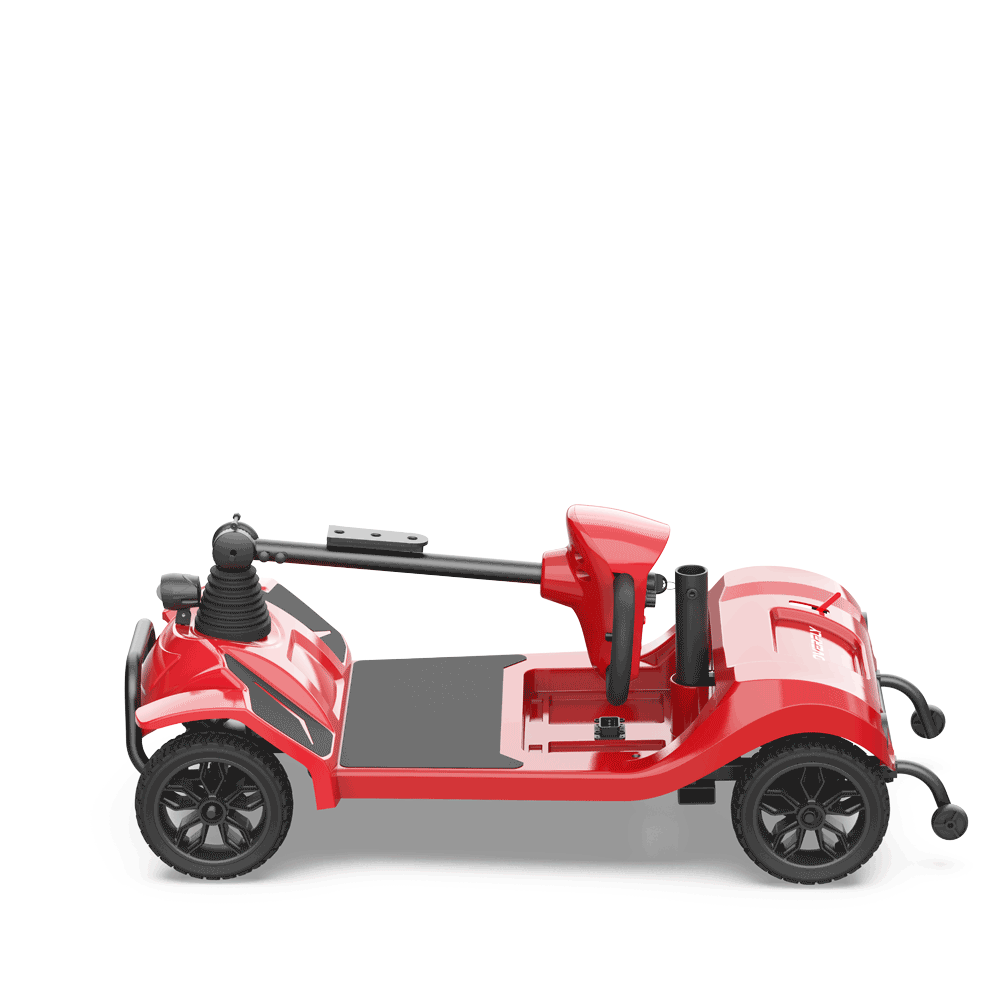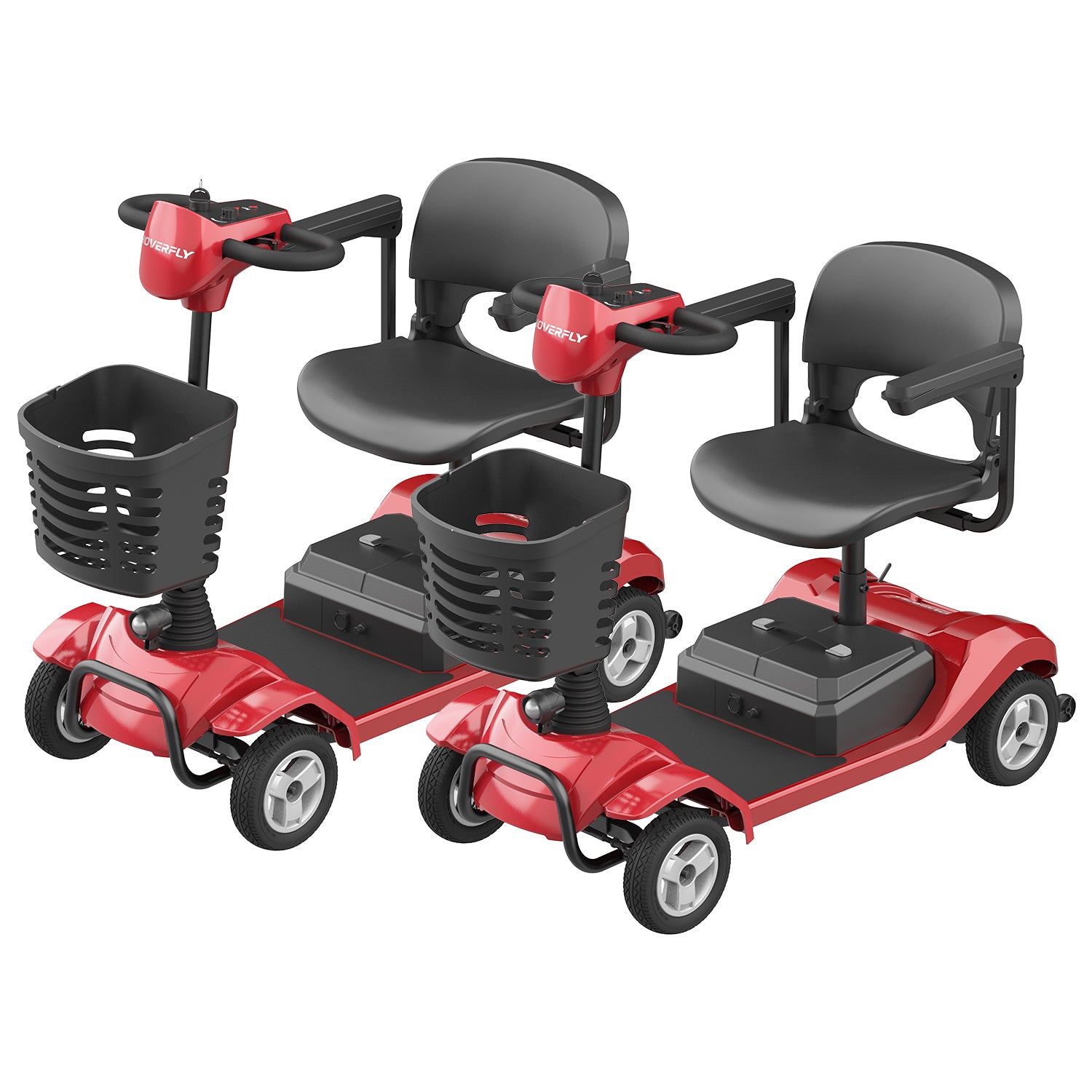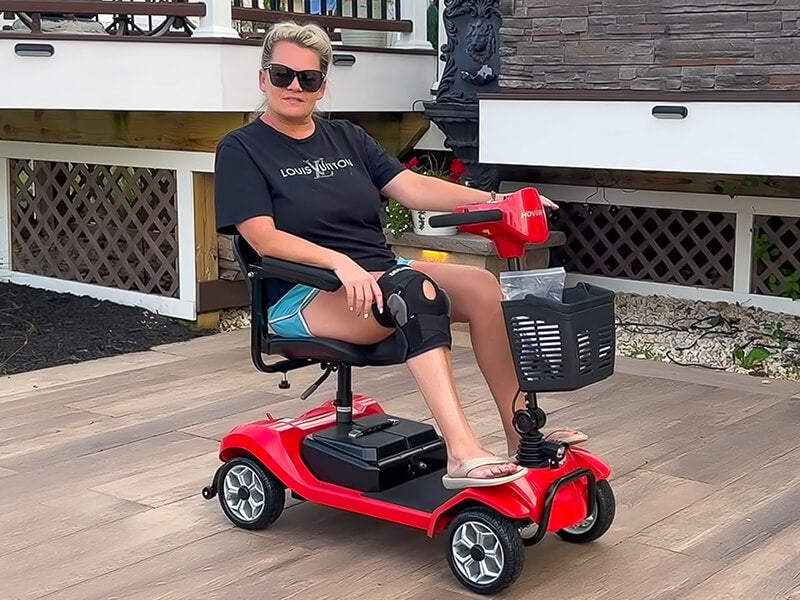
Main Types of Mobility Scooters We Offer
Shopping for a mobility scooter for sale? Check out the different options and how they fit into your lifestyle:
Lightweight 3 Wheel Mobility Scooters: Easy to fold, carry, and store. Perfect for seniors who want a portable option for quick errands or travel.
4 Wheel Mobility Scooters: Stable and safe for outdoor use. Great for parks, grocery runs, or family gatherings.
Premium Mobility Scooters: Designed for extended use, with higher mileage per charge, so you can explore further without worry.
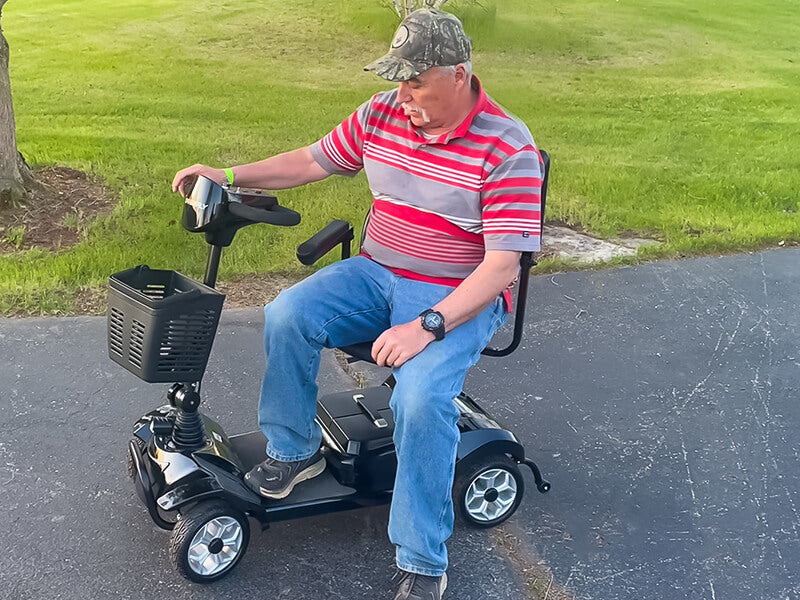
Why choose Hoverfly Mobility Scooters?
All our handicap scooters come with free shipping, 30-day free returns and 12-month warranty. Futhermore, we are the sub-brand of Gotrax. Thanks to Gotrax's more than ten years of experience, we are experienced in product quality, product safety and after-sales customer service.
Mobility Scooter FAQ
How far can an dlectric mobility scooter travel on one charge?
On average, today's mobility scooters can travel just over 15 miles per charge, though this number continues to rise as battery technology improves. The range varies significantly by model—for example, the T4 mobility scooter offers an estimated 12-mile range, while the T5 mobility scooter has a more modest 16-mile range.
Does the mobility scooter require assembly?
Most mobility scooters are simple to assemble, typically consisting of just 3-4 parts. In fact, many models require no tools at all, making setup quick and hassle-free.
Can the scooter fit in a car trunk?
Yes, our scooters are compact and fit in most trunks.
What is included with the purchase?
Your package includes: ✅ Scooter ✅ Battery ✅ Fast Charger ✅ Storage basket✅ Tool kit✅12-Month Warranty
Where I can get the user manual before purchase?
You can click this link to download all hoverfly products user manuals
Can I use my mobility scooter on sidewalks and indoors?
Yes, our scooters are compact enough for indoor use and safe for sidewalks. They are versatile for daily living.
What maintenance is required for a mobility scooter?
Minimal maintenance is needed. We recommend regularly charging the battery, checking tires, and keeping the scooter clean. All Hoverfly scooters come with a 1-year warranty for added peace of mind.
What’s the weight capacity of Hoverfly mobility scooters?
All models support up to 330 lbs, though performance (like speed) may reduce when nearing that limit.
How often should I charge my mobility scooter?
In terms of how often you should charge the battery, it will also be dependent on the scooter and its battery and how often you use your scooter.
If you use your mobility scooter every day, it’s a good idea to charge the scooter when you are done with it for the day. If you use it less, you might need to charge it only twice a week.
The worst option is to let your scooter battery drop too low or wait until it drops before charging. Refer to the manual to see the recommended charge times.
What are the main differences between the T3, T4, and T5 seats?
The T4 and T5 models have armrests that can be adjusted for both width and height, while the T3 has no armrests.
All 3 chairs have 3 adjustable seat height settings.
Seating dimensions are as follows:
T5: 17.3 x 17.7 inches (L x W)
T4: 18.1 x 16.9 inches (L x W)
T3: 18.1 x 16.9 inches (L x W)
Can the scooters be used on grass or gravel?
T3 mobility scooter: Not recommended. This is the best for smooth, indoor, or paved paths only.
T4 mobility scooter: Yes. It handles light grass and gravel surfaces.
T5 mobility scooter: Yes. It has strong performance on outdoor terrain, including grass and gravel.
What payment methods do you accept?
💳 Credit/Debit Cards (Visa, MasterCard, American Express, Discover,Diners Club, )
🅿️ PayPal
📱 Apple Pay, Google Pay, Amazon Pay and Shop Pay (available on supported devices)
How to Choose the Right Mobility Scooter?
Where Will You Use the Scooter?
Think about where you’ll be using a mobility scooter most often. Indoors, outdoors, or both? This will help you determine the best scooter model for your specific needs.
- Indoor Use: Ensure it fits through doorways, can navigate hallways, and can turn in tight spaces like kitchens or bathrooms. Consider the turning radius to ensure it fits your home layout.
- Indoor/Outdoor Use: Most scooters work well on smooth surfaces, but rough terrain may require better suspension or larger wheels.
- Outdoor-Only Use: Make sure it has durable wheels, a long-lasting battery, and a suspension system to drive on uneven surfaces. Also, choose those provide adequate lighting when using it in low-light environments.
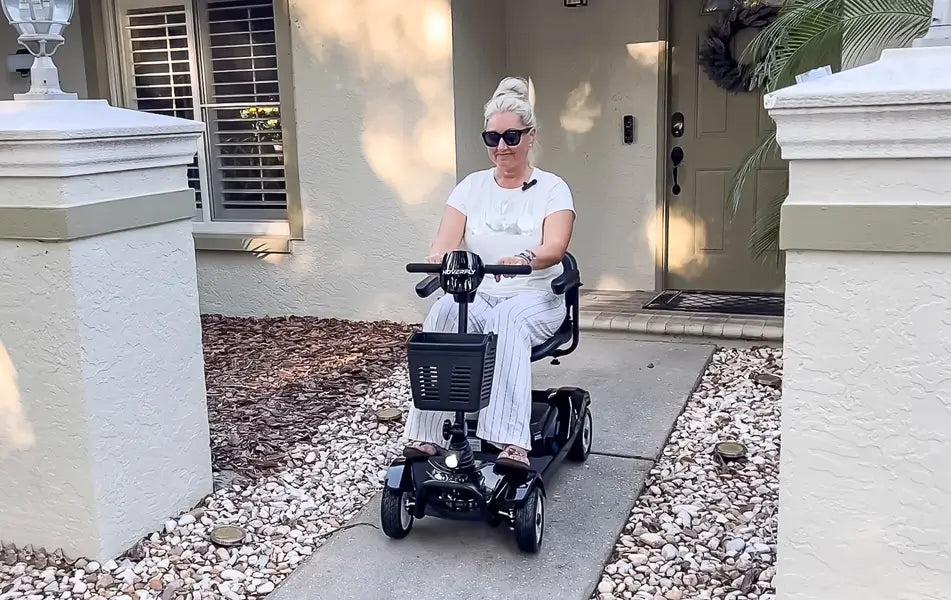
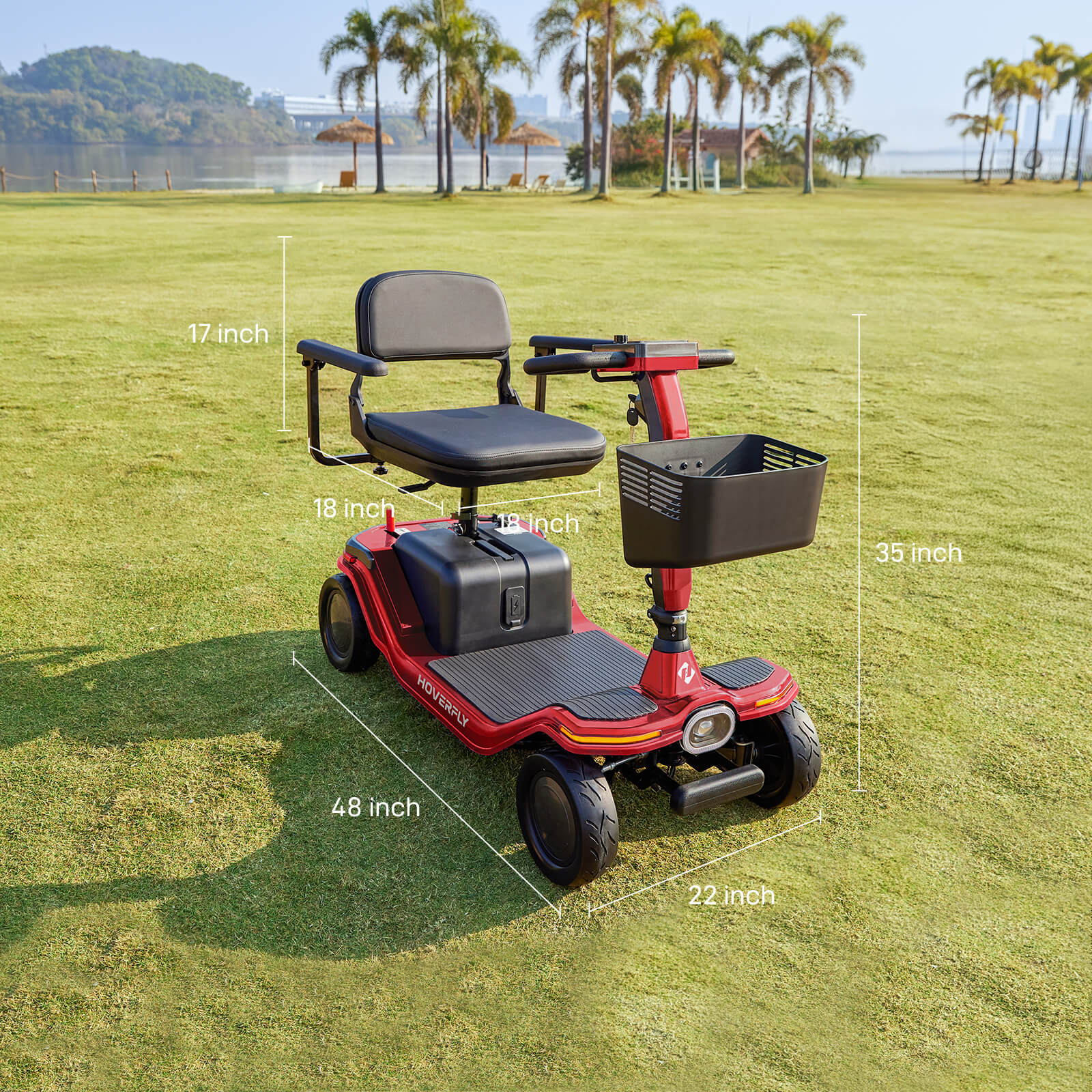
Key Features to Look for in a Mobility Scooter
Weight Capacity
Ensure the scooter supports your weight, plus anything you may carry with you (like bags or personal items). It's a good idea to choose a model with a weight capacity that’s at least 25 lbs higher than your weight to allow for extra items or a pet.
Range Per Charge
How far can you travel on a single charge? Battery life can vary based on terrain and speed, so choose a scooter with a range that exceeds your daily needs.
Battery Type
There are two main types of batteries: Sealed Lead Acid (SLA) and Lithium-ion. SLA batteries are often more affordable but heavier, while Lithium batteries are lighter and have a longer lifespan.
Portability
Are you planning to take your scooter on trips? Our foldable mobility scooters are disassemblable and easier to transport on your car.
Mobility Scooter Maintenance Tips
Follow this simple maintenance checklist to ensure your scooter stays reliable:
1. Regular Cleaning & Battery Care
Clean the frame: Wipe down the frame, seat, and other surfaces regularly to remove dirt, dust, and debris.
Battery care: Always charge your scooter after each use, even if the battery isn’t fully drained.
For Lithium-ion batteries, aim to keep them between 20% and 80% charged. As for Lead-acid batteries, avoid letting them completely discharge.
2. Tire Maintenance
Check air pressure: Make sure pneumatic tires are properly inflated (usually indicated on the tire sidewall). Low pressure can cause sluggish movement and put more strain on the motor.
Inspect for wear: Regularly inspect the tread and tire condition. If you notice wear or punctures, consider replacing the tires.
3. Other Common Issues
Sluggish performance: If your scooter feels slow or unresponsive, it could be due to low battery, dirty contacts, or tire pressure issues.
Uneven ride: If you feel unstable on the mobility scooter, inspect the suspension system, wheels, and seat adjustments.
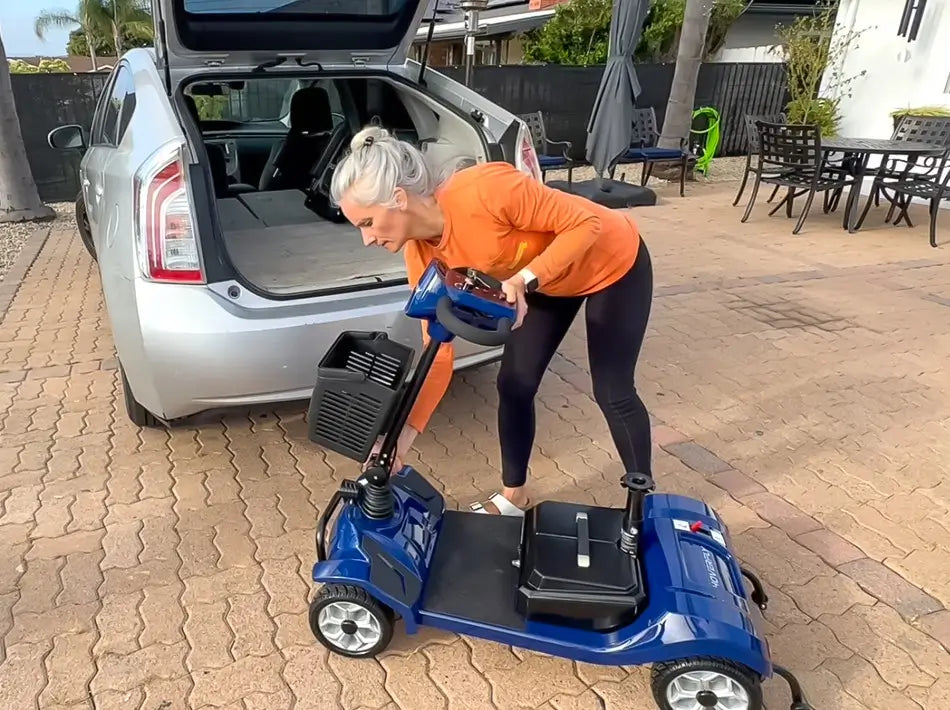
Mobility Scooter Safety Tips
Here are some essential safety best practices to follow:
1. Operating the Scooter Safely
Starting and stopping: Always start slowly, especially when navigating tight spaces or busy areas. Use the brakes gently when stopping, and never abruptly slam on the brakes.
Turning: When turning, always slow down to prevent tipping over. Keep your hands firmly on the handlebars and maintain a steady speed.
Navigating different terrains: Take extra care when driving the all-terrain mobility scooter over curbs, gravel, or wet surfaces.
2. Understanding the Scooter’s Limits
Inclines: Most scooters have a maximum incline capacity. Make sure you know the maximum angle your scooter can handle.
Battery life: Know your scooter’s range per charge. If you're going on a long trip, consider taking a spare battery if your scooter model allows it.
Speed limits: Always stick to the recommended speed for your safety.
3. Wear Safety Gear
For added protection, consider wearing elbow pads, knee pads, or a helmet.





